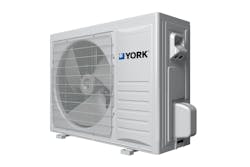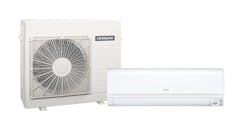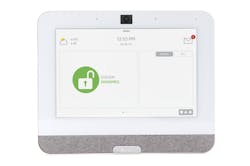Making Smart Homes Smarter
In the US, the number of smart homes is expected to increase from about 57.5 million this year to over 77 million by 2025—accounting for roughly three-fifths of all households.
“The connected home is no longer a luxury—it has become standard,” Casey Yates, vice president of sales and marketing, ducted systems, Johnson Controls, said in a statement.
Johnson Controls, which provides HVAC, security, and fire equipment, says it designs smart home products to save energy, improve safety, and optimize comfort. The company got its start in the 1880s, after founder Warren Johnson, a Wisconsin educator, invented the first thermostat to monitor room temperature.
Today, with more than 2,000 locations serving customers in over 150 countries, Johnson Controls dedicates about half of its annual research and development to product lines that support service and digital technologies.
THE AMERICAN SMART HOME DREAM
“Homeowners are looking for smart, connected home comfort systems that offer high-efficiency performance, worry-free reliability, and customizable functionality,” says Jason Wilson, product manager, Johnson Controls. Often, he adds, that means they want a top-tier heating and cooling system paired with a smart home controls system.
For instance, Johnson Controls offers smart home systems with geo-fencing, which senses the users’ distance from their home and can automatically turn on or off the HVAC systems and other smart home products to save energy. And the YORK Hx3 Communicating Zoning System allows homeowners to customize temperatures in up to eight zones within one home. With customer permission, contractors can monitor the system’s performance through the Hx app, so they can identify any issues before they arrive at the home.
RELATED: 4 Simple Smart Tech Solutions for Builders
For many homeowners, tech-enabled connection and control inside the home has become table stakes. “Customers expect a system at any price point to be seamlessly integrated and controlled anywhere with their smartphone or connected to a smart controls system,” Wilson says.
The demand for more efficient smart homes likely will increase amid changing regulations, notably the Department of Energy’s requirement for higher-efficiency HVAC systems as of 2023. “What’s considered high-end today will be considered mid-tier by 2023,” Wilson says.
As their adoption of connected home tech rises, homeowners want the product quality to go up, too, Wilson says. “Recently, we’ve seen a turn in the market where potential homebuyers recognize the value of a connected high-end HVAC system, and many builder groups are now using higher-quality HVAC equipment as a selling feature for new homes,” Wilson says. Such equipment can reduce energy use by up to 50% compared to older, low-SEER systems, he adds.
WHAT PRODUCTS DOES JOHNSON CONTROLS MAKE?
Here are a few of the connected home products that Johnson Controls showcased at the NAHB International Builders’ Show, held earlier this year in Orlando, Fla.
YORK HMH7 17 SEER Horizontal Discharge Heat Pump
This residential heat pump has been designed for compact spaces, providing quiet performance without sacrificing comfort. The horizontal discharge unit has a 40% smaller footprint than traditional, vertical units. “This makes it a great system for homes in temperate, high-density regions that require a compact design, such as properties with zero lot lines,” Wilson says.
The heat pump can be operated via the YORK Hx Wi-Fi Touch Screen Thermostat or the Hx app.
Hitachi H500 Single-Zone Mini-Split System
A ductless cooling and heating solution, the Hitachi Mini-Split System features smart sensors that respond to occupant activity for personalized comfort. The energy-efficient system has up to 22 SEER levels for lower energy costs and less environmental impact. It also includes a self-cleaning feature for both indoor and outdoor units to help provide fresher air, improve reliability, and reduce maintenance.
The Mini-Split can be controlled remotely via the airCloud Home app; users also have the option of voice control.
Qolsys IQ Panel 4
An all-in-one smart home platform, the Qolsys IQ Panel 4 controls a property’s intelligent devices—including smart lighting, smart thermostats, smart locks, garage openers, and PowerG security sensors.
Compatible with many connected devices and all major voice platforms, the IQ Panel 4 can integrate with home technology providers such as Alarm.com, Control4, and SolarEdge. “This intelligent platform is a leading choice for new construction smart homes,” Wilson says.



